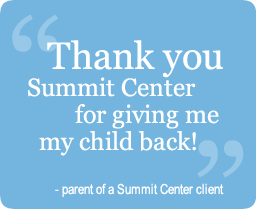This piece originally appeared on Psychology Today. Summit Center can help you learn more about your child’s learning strengths plus any potential issues, and can help you find an alternative learning environment if needed.
I am sitting with a small group of students who are describing their school experiences. They are talking about worry, fear and anxiety (aka “The Worry Monster”). They are saying…
“I got nervous when I had to take timed tests. I could never finish.”
“I was always in trouble for talking.”
“I was bullied. The class bully only picked on me. I don’t know why.”
“I felt different from everyone else.”
“Why did I need to show our work and do things over and over if I knew the answer?!”
This is the first day at a small new school – The Reid Day School (RDS) in Southern California. RDS was founded by Dr. Lisa Reid who was inspired by her experience working at Bridges Academy. RDS was named in honor of Lisa’s father, Martin Reid. On the wall in the lobby is a picture of Martin with his quoted belief, “Finding the best, empowering them, and then getting out of the way.” This is the guiding principal for RDS students and their highly skilled and compassionate educational team.
The students at RDS are considered twice exceptional or “2e” which represents their abilities on both ends of the bell curve. They are all gifted (very smart), highly gifted in fact, and also have learning and processing challenges that impact their ability to learn in a traditional, and even most, non-traditional and progressive environments. They may have dyslexia (trouble reading and spelling), dysgraphia (trouble with copying and writing), auditory processing and visual processing challenges, sensory processing difficulties, ADHD, and/or be on the highest end of the autistic spectrum (previously called Aspergers Syndrome). You all know these people – Albert Einstein, Helen Keller, Thomas Edison, Temple Grandin, Richard Branson, and the list goes on. They, and the others like them, had predominately miserable school experiences. Yet, many, if lucky, also had one educator, mentor, coach, or family member who got them, inspired them, and found a way to teach them in a manner that they were able to learn – and eventually change the world.
Bridges Academy was the first school program developed to explicitly recognize the strengths and complex nature of twice exceptional students. The school continues to set the standard for true teaching, meeting 2e students where they are, realizing the tremendous potential within them and providing a nurturing and understanding, yet challenging environment so that they can reach it. The biggest disservice we do to our 2e children is underestimating their vast ability. Reid had what she describes as a “very fortunate opportunity” to work there. She references her time there as an “eye opening and overwhelmingly positive experience ” that changed her perspective as a gifted educator and inspired her to expand educational advocacy and support for the needs of twice-exceptional students in Orange County.
Changing the world is not the goal of educating these 2e students at RDS or the other similar schools that exist. The first goal is to provide a learning environment where these kids feel safe in order for them to be able to learn. Many come to school with their amygdala (fear center of the brain) on overdrive. They are on high alert for threat – whether it come from other students, teachers, and/or administrators and are ready to protect themselves at any moment by hiding, avoiding, or exhibiting big emotions or meltdowns. How can a child learn if their emotional brain is always on and they can’t access their thinking and learning brain?
The tragedy is that these are bright and creative kids who are out of the box thinkers who love to learn. So what has RDS and the few other schools like them done? They provide a safe environment for learning, with skilled and compassionate educators who differentiate the learning towards the student’s ability level in a way that they can learn. It’s not rocket science. Or is it?
Standards driven curriculum, an over focus on benchmarks, and even the latest Common Core makes it hard for these kids to show what they know in a way that emphasizes learning over production and output. Gifted kids are sensitive to their surroundings and have high personal standards (also known as perfectionism). When they can’t produce what they feel they should or are expected to, they often become overwhelmed and anxious, resulting in feeling dumb, bad, and worthless.
The solution: A learning environment that understands kids have strengths and weaknesses; a learning environment that differentiates for advanced abilities while simultaneously accommodating weaknesses; a learning environment that understands that there are many ways to teach and show mastery; a learning environment that values creative problem solving and individualism; a learning environment that provides opportunity for intellectual engagement, exploration, and confidence as a learner and person.
I watched kids who have charts filled with difficult experiences and descriptions of big emotions smiling, laughing, engaging, and dancing (just for fun). And they were learning.
“Finding the best, empowering them, and then getting out of the way.” Lisa Reid and the Reid Day School are doing it. I applaud them and the other schools out there who are doing the same—especially outside the box.
This article references two schools for twice-exceptional students in Southern California. In Northern California, schools for 2e students include DaVinci Center in Alameda, Big Minds in Pinole, and McNaught School in San Jose.


